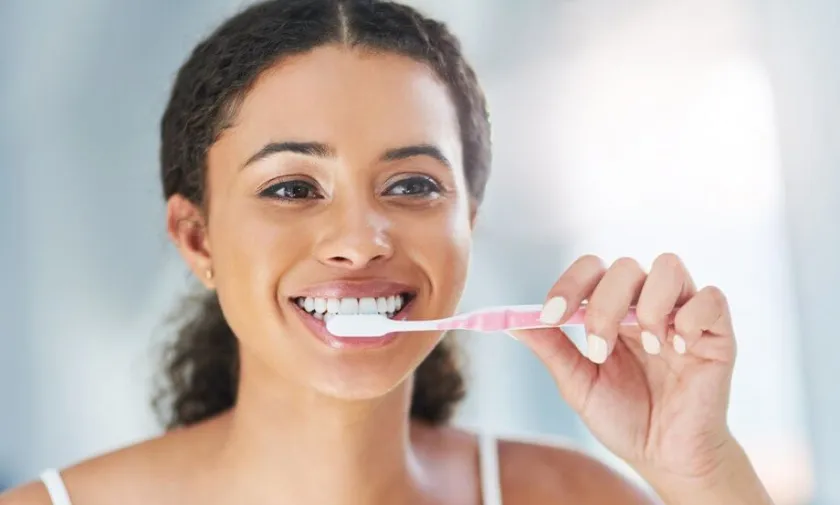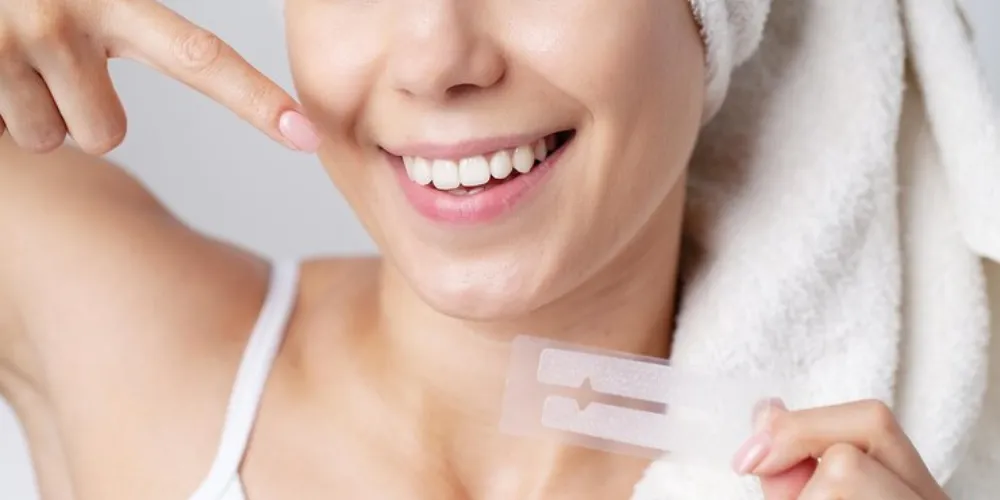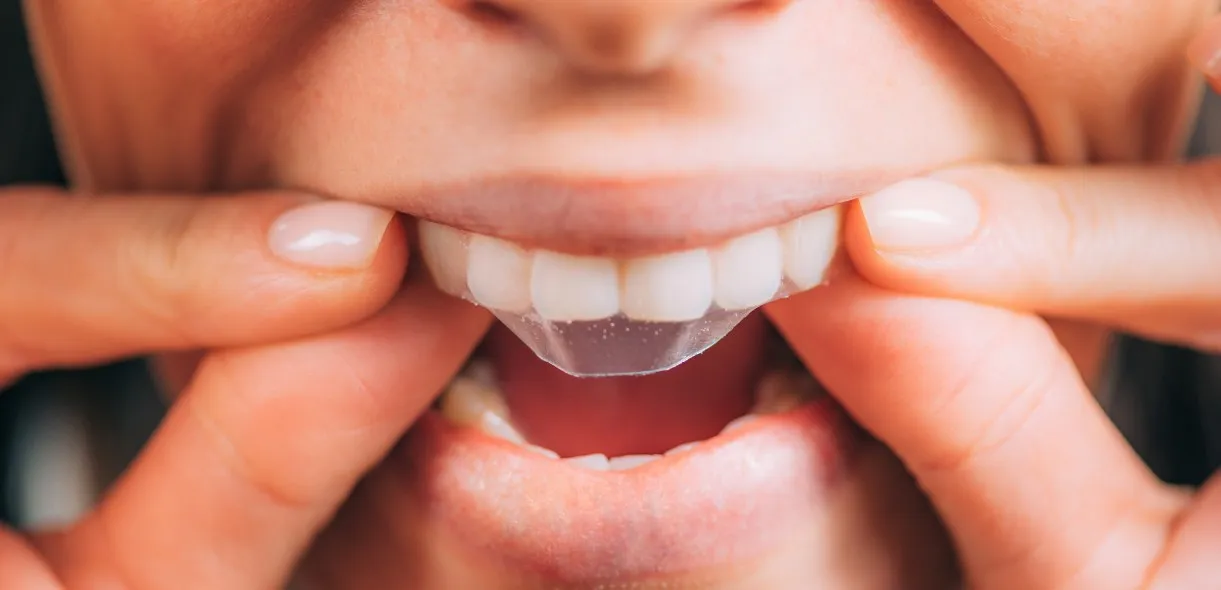Understanding Teeth Whitening Strips
Teeth whitening strips have become a popular and convenient way to achieve a brighter smile. These strips are thin, flexible pieces of plastic coated with a whitening agent, typically hydrogen peroxide or carbamide peroxide. They are designed to adhere to the surface of your teeth, delivering the active ingredient directly to the enamel. Understanding how these strips work and how to use them correctly is crucial for maximizing their effectiveness and avoiding potential side effects. The market is flooded with different brands and formulations, each claiming to offer superior results. But beyond the marketing claims, the fundamental principles of how these strips work remain consistent.
How Whitening Strips Work
The active ingredient in whitening strips, typically hydrogen peroxide, penetrates the enamel of your teeth. Once inside, it breaks down into water and oxygen molecules. The oxygen molecules then react with the stain molecules that have accumulated within the enamel. This chemical reaction oxidizes the stain molecules, breaking them apart and making them less visible, thereby lightening the overall shade of your teeth. The process is gradual, and the degree of whitening depends on the concentration of the active ingredient, the duration of application, and the type and severity of stains. Regular use, as directed by the product instructions, is generally required to achieve the desired results. It’s important to note that whitening strips primarily target surface stains and may not be as effective on intrinsic stains, which are deeper within the tooth structure.
Ingredients in Whitening Strips

The primary active ingredient in most teeth whitening strips is either hydrogen peroxide or carbamide peroxide. Hydrogen peroxide is a stronger oxidizing agent and often delivers faster results. Carbamide peroxide breaks down into hydrogen peroxide, but at a slower rate. The concentration of these ingredients can vary, influencing both the effectiveness and the potential for sensitivity. Besides the active whitening agent, strips also contain other ingredients. These may include a bonding agent to help the strip adhere to the teeth, a film-forming polymer to create the strip’s structure, and flavoring agents to improve the taste. Some strips may also contain ingredients to help reduce tooth sensitivity, such as potassium nitrate or fluoride. Reading the product label carefully is always recommended to understand the specific ingredients and any potential allergens.
Maximizing Results
To get the most out of your teeth whitening strips and achieve that dazzling smile, it’s essential to follow a few key steps. Proper preparation, correct application, and appropriate aftercare can significantly impact the effectiveness of the treatment. Moreover, avoiding certain habits and substances can prevent stains from re-appearing and maintain your newly brightened smile for longer. While whitening strips are generally safe, understanding these aspects will not only help you achieve the best results but also minimize any potential risks or discomfort associated with the process. Let’s dive into the specifics of how you can maximize the impact of your teeth whitening strips.
Pre-Whitening Strip Preparation
Preparing your teeth before applying whitening strips is a crucial step in ensuring optimal results. This preparation helps create a clean surface for the whitening agent to work effectively. Proper preparation not only enhances the whitening process but also minimizes potential issues, such as uneven whitening or increased sensitivity. Brushing and flossing before applying the strips can remove plaque and debris, allowing the whitening agent to better penetrate the enamel. It also helps ensure the strips adhere properly, and provides a more even whitening experience. This preliminary effort is the key to a brighter, more uniform smile.
Brushing Before Whitening Strips

Brushing your teeth before using whitening strips is a generally recommended practice, but the timing is important. The recommendation is to brush your teeth about 30 minutes before applying the strips. This allows the fluoride in your toothpaste to work, and then gives your teeth a chance to re-mineralize, which minimizes sensitivity and gives the whitening strips the most direct contact possible with the enamel. Make sure to rinse your mouth thoroughly after brushing to remove any residual toothpaste. Avoid brushing immediately before applying the strips, as this can create a barrier that prevents the whitening agent from fully reaching the enamel. This delay ensures that your teeth are clean and ready for the whitening process, without any interference from toothpaste ingredients. Use a soft-bristled toothbrush and gentle circular motions to avoid irritating your gums.
Flossing Before Application
Flossing before applying whitening strips is just as important as brushing. Flossing removes food particles and plaque from between your teeth and along the gumline. These areas can be difficult to reach with a toothbrush alone, and removing debris ensures the whitening agent can effectively reach all surfaces of your teeth. By flossing beforehand, you create a cleaner surface, promoting a more even whitening effect and preventing the whitening agent from being blocked by food particles. This proactive approach contributes to a more uniform and brighter smile. Make sure to floss gently to avoid irritating your gums, and consider using a floss that’s easy to maneuver between your teeth.
Applying the Strips Correctly
Applying teeth whitening strips correctly is essential for achieving the best results. This involves following the product instructions closely, which usually involve peeling the strips from the backing, applying them to the upper and lower teeth, and ensuring they make complete contact with the tooth surfaces. Correct application ensures that the whitening agent is delivered evenly across your teeth, maximizing the whitening effect. Pay attention to the recommended duration of use and avoid over-application, as this can lead to increased sensitivity or other adverse effects. The aim is to create a snug fit that covers the majority of your teeth’s visible surface.
Ensuring Proper Adhesion

Proper adhesion is vital for the effectiveness of whitening strips. The strips must adhere securely to your teeth to ensure the whitening agent remains in contact with the enamel. Before applying the strips, make sure your teeth are dry, as moisture can hinder adhesion. Carefully position the strips, aligning them with your gumline and pressing them gently onto your teeth. Use your fingers to smooth out any air bubbles or creases, ensuring the entire surface of the strip makes contact with the teeth. The better the adhesion, the more effective the whitening process will be. Do not force the strips; a gentle yet firm application is usually sufficient for optimal results. Some brands may offer strips that mold more easily to the teeth, enhancing adhesion and overall whitening performance.
Avoiding Contact with Gums
Avoiding contact with your gums is crucial when using teeth whitening strips. The whitening agents, especially hydrogen peroxide, can irritate the soft tissues of your gums, potentially leading to sensitivity or even inflammation. When applying the strips, try to keep them a millimeter or two away from the gumline. Ensure the strips only cover the visible surfaces of your teeth. If the whitening agent comes into contact with your gums, wipe it away immediately with a clean cloth. In cases of irritation, discontinue use and consult with a dentist. Pay close attention during application and use a mirror to ensure correct placement. Proper application techniques can greatly reduce the risk of gum irritation.
Post-Application Care
After using whitening strips, proper aftercare is important for maximizing results and minimizing potential side effects. This involves knowing when to brush your teeth, avoiding staining foods and drinks, and generally taking care of your oral hygiene. Following these recommendations will not only help preserve the whitening effect but also ensure the long-term health of your teeth and gums. It is also crucial to consider the timing of your oral care routine to ensure you are not counteracting the whitening process or irritating your teeth. The post-application phase is as crucial as the preparation and application steps.
When to Brush Your Teeth

The best practice is to avoid brushing immediately after removing the whitening strips. The enamel is slightly porous after the whitening treatment, and brushing immediately can potentially increase sensitivity. The recommendation is to wait at least 30 minutes to an hour before brushing your teeth. During this period, your teeth have the chance to re-mineralize and become less susceptible to sensitivity. If you experience any discomfort, you can use a toothpaste designed for sensitive teeth. Brushing too soon after application could also remove some of the whitening agent before it has fully done its work. Be patient and give your teeth the necessary time to recover and reset before your next brushing session.
Avoiding Staining Foods and Drinks
During and immediately after your teeth whitening treatments, it’s important to avoid or limit your intake of foods and drinks that can stain your teeth. These include coffee, tea, red wine, dark sodas, berries, and heavily pigmented sauces, such as soy sauce and tomato sauce. These substances can seep into the enamel and negate the whitening effects, potentially reversing the results. If you consume any of these items, rinse your mouth with water immediately afterward or brush your teeth (after the recommended waiting period). This precaution is important during the entire whitening treatment period and for a couple of weeks afterward to allow your teeth to fully stabilize and the whitening effect to set in. This helps in maximizing the longevity of your brighter smile.
Maintaining Your Results
Once you’ve achieved your desired level of whiteness, maintaining those results is key. This requires a combination of good oral hygiene practices, regular dental checkups, and, in some cases, follow-up whitening treatments. With proper care and attention, you can prolong the effects of your whitening strips and enjoy a brighter smile for a longer period. It’s a long-term commitment, not just a one-time treatment. Consistency and diligence are the keys to maintaining a dazzling smile. This proactive approach ensures that your smile remains bright, healthy, and vibrant long after you’ve finished using your whitening strips.
Oral Hygiene Routine

Maintaining a consistent oral hygiene routine is crucial for preserving your teeth whitening results. This includes brushing your teeth twice daily with fluoride toothpaste, flossing once a day, and using an antibacterial mouthwash. Brushing helps remove plaque and surface stains, while flossing gets rid of food particles and debris that can lead to discoloration. Using an antibacterial mouthwash can help reduce bacteria that contribute to staining. Your oral hygiene routine is not just about a bright smile; it is also about maintaining overall oral health. Regular, thorough brushing and flossing, combined with the use of a good mouthwash, can ensure that your teeth stay healthy and bright for years.
Regular Dental Checkups
Regular dental checkups are essential for maintaining your teeth whitening results and your overall oral health. During these visits, your dentist can professionally clean your teeth, removing any surface stains that regular brushing might have missed. They can also assess the overall health of your teeth and gums, identifying any potential issues early on. Your dentist might also recommend professional whitening treatments to boost the effects of your home whitening routine. Routine checkups are essential in identifying and addressing any issues promptly, which can protect your investment in teeth whitening and ensure your smile stays bright and healthy. Follow your dentist’s recommendations for checkup frequency, usually every six months, to maintain optimal oral health.
Long-Term Whitening Strategies
To maintain the longevity of your teeth whitening results, you can consider several strategies. These strategies involve incorporating consistent habits and making informed choices about your lifestyle and oral care routine. By doing so, you are not just maintaining your results but also reinforcing your commitment to overall oral health. Think about the habits and routines that can contribute to a lasting, bright smile. Beyond regular dental visits and diligent oral hygiene, these long-term strategies can help you keep your smile radiant and confident for years to come.
Use a whitening toothpaste and mouthwash. These products can help to maintain the brightness of your teeth by removing surface stains. Avoid smoking and limit your consumption of staining foods and drinks. Smoking is a major cause of tooth discoloration, and limiting staining foods and drinks helps to prevent stains from returning. Consider touch-up treatments. If your teeth start to lose their brightness, you can use whitening strips or get professional whitening treatments to restore your smile. Consult with your dentist for personalized advice. Your dentist can recommend the best approach for your teeth and oral health needs. By adopting these long-term whitening strategies, you can maintain your brighter, more confident smile for years to come.
